If there’s one dish that instantly takes me back to my other home, Costa Rica, it’s Gallo Pinto. Living in the United States now, I often miss the flavors that shaped my mornings growing up. This simple mix of rice and beans is more than just breakfast, it’s part of everyday life in Costa Rica. I ate it almost daily, whether it was served with fried plantains, fresh cheese, or (for most people) a hot cup of coffee. I don’t actually drink coffee—yes, I’m part of that rare 1% of Ticos who don’t!—but for me, Gallo Pinto is still the ultimate way to start your day with flavor, comfort, and tradition. Watch the video here.
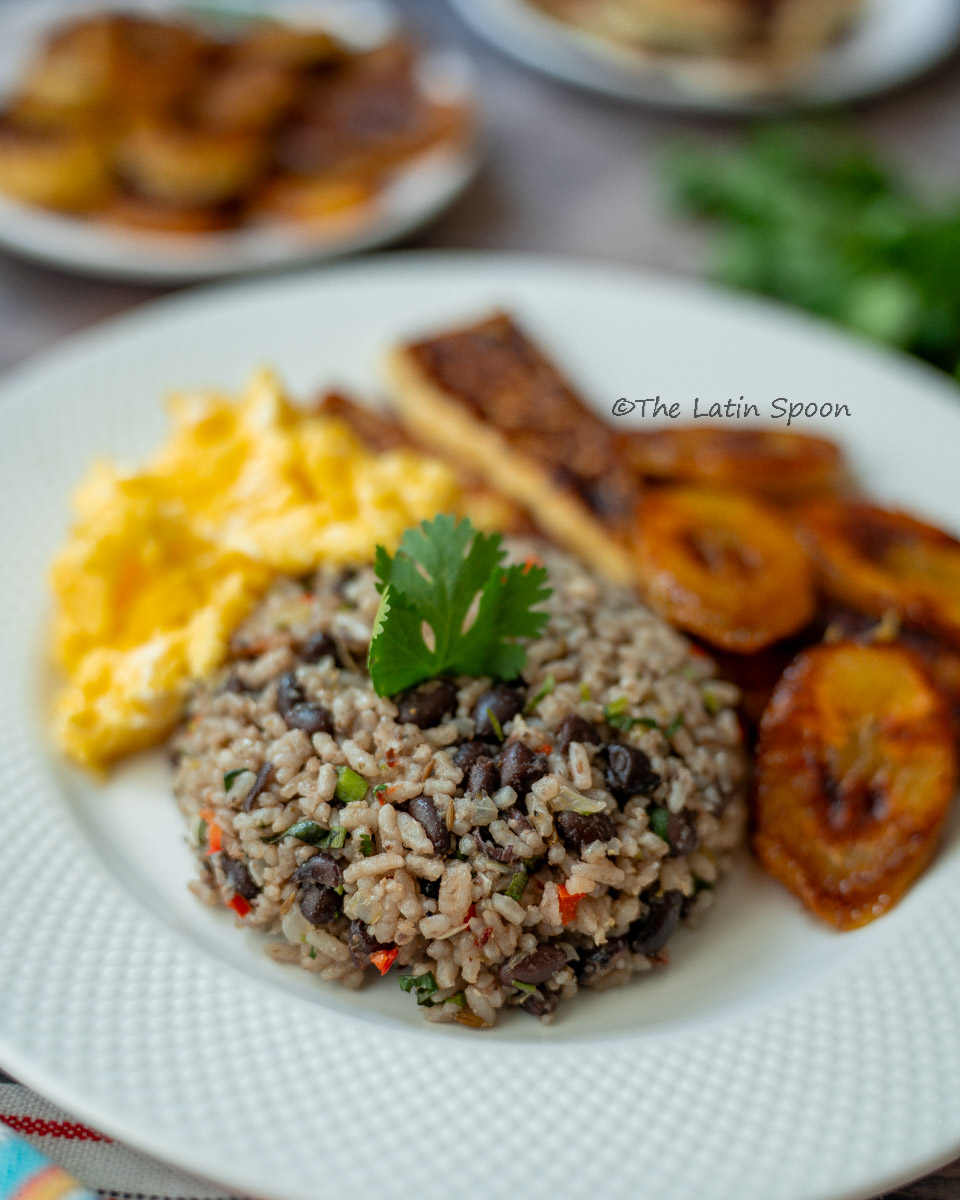
There’s no need to translate “Gallo Pinto” into English. What really matters is how it feels when you sit down to a plate of this Costa Rican classic: rice and beans perfectly cooked together, a little sofrito, some fresh herbs, and that flavor that instantly says Pura Vida. This is the dish we eat day in and day out, and today I’m showing you how to make it at home.
What is Gallo Pinto?
Gallo Pinto is Costa Rica’s signature rice and beans dish, usually enjoyed for breakfast but loved at any time of day. It’s made by mixing cooked rice 🍚 with beans, a simple sofrito 🧅, and fresh herbs 🌿—and depending on the region or even the household, you’ll find it prepared a little differently each time.
It’s also a big part of Nicaraguan culture (we’re neighboring countries and share a lot of similarities), and yes, we also share Gallo Pinto. Actually, to the point where—believe it or not—Ticos and Nicas argue about who came up with the “brilliant” idea of mixing rice and beans together (yes, I’m being sarcastic). We’re not getting into that debate here for two reasons. Number one: I believe food should unite us as the Centroamerican brothers and sisters we are, not separate us. And number two: I’m not a historian, so I don’t have the “knowledge” to argue who created it first.
What I do know is that Gallo Pinto is delicious—both the Nica and the Tico version. And today, I’m going to show you my version. Because even in my own family, you’ll find differences. My sister seasons the beans first; I season the rice first. In Guanacaste, people eat Gallo Pinto crispy (tostado). In San José (the capital, where I’m from), we eat it a little bit wetter (mojado). And you know what? All versions are amazing!
And don’t even get me started on Salsa Lizano. Most Costa Ricans love it (I don’t have statistics—I’m just a cook), but a big part of the population insists you should never add it to Gallo Pinto. And you know what? They’re all right. Every version of Gallo Pinto is correct—and every single one of them tastes like home to me.
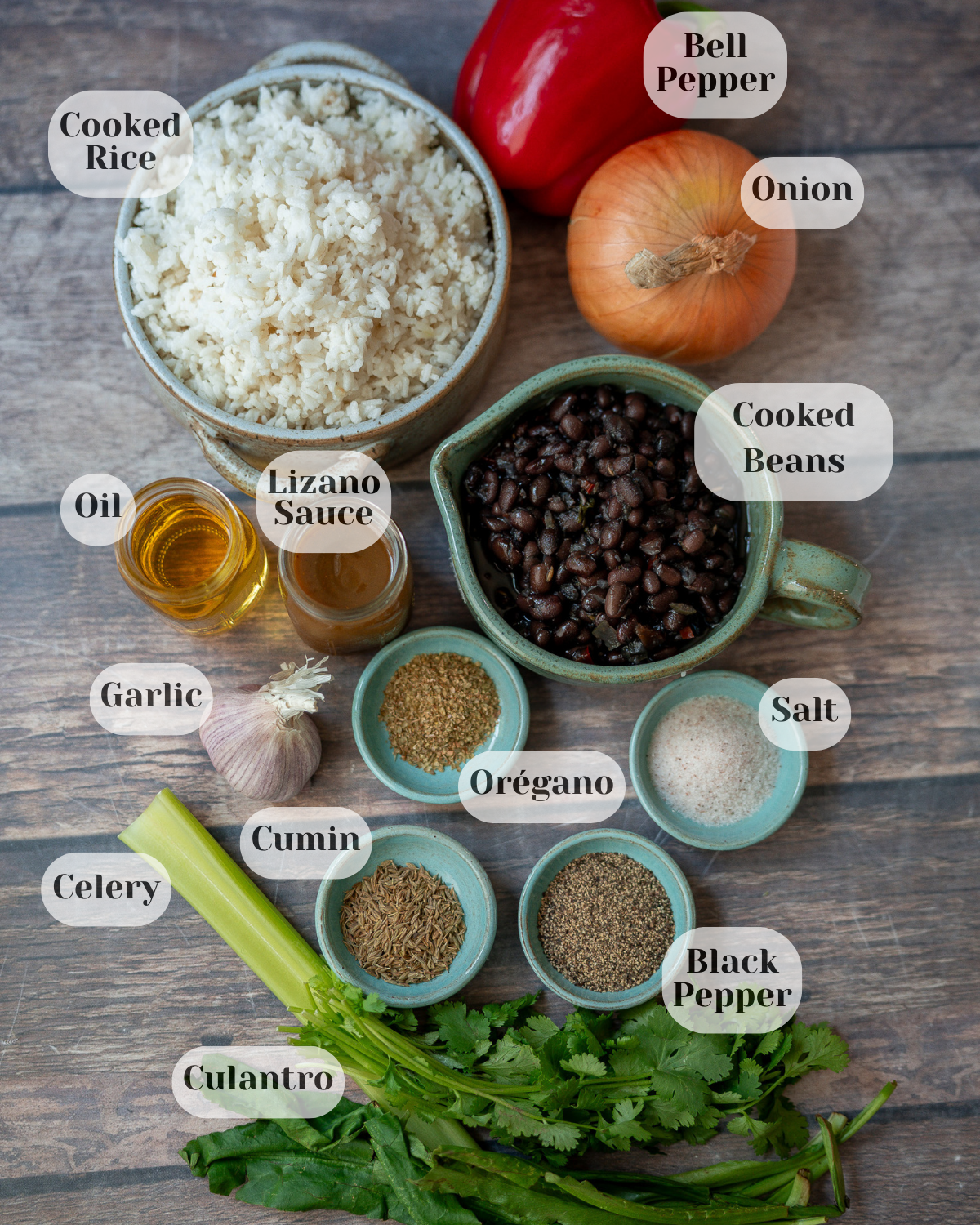
Ingredients for Costa Rican Gallo Pinto
These are the ingredients I’m using to make authentic Costa Rican Gallo Pinto. Each family has their own little twist, but this is how I grew up eating it at home.
🍚 Rice
I’m using long-grain white rice for this recipe (you can learn how to make Costa Rican white rice [here – insert link]). Originally, Gallo Pinto was created to reuse leftover rice and beans. Since rice and beans are eaten every single day in Costa Rica, people usually cook fresh rice daily (or as often as possible). That means there are always leftovers in the fridge—plenty to make Pinto with.
Now, Pinto isn’t made every day; it’s made when you have enough leftover rice and beans sitting around. Why do I mention this? Because if all you’ve got is jasmine rice, use that. If what’s left in your fridge is basmati, guess what? It’ll work perfectly for your own version of Gallo Pinto. 😉
Beans
Same thing with beans—leftover beans are meant to be used in Gallo Pinto. So just use whatever you have available: red, black, pinto, or even a mix of both (I’ve seen it, I’ve eaten it, and honestly…it’s pretty amazing if you ask me).
🧅 Sofrito
Sofrito is the base of many Costa Rican and Latin American dishes. Each region has its own version—some include peppers like ají, cubanelle, or bell peppers, plus ingredients like tomato, celery, or cilantro. But no matter where you go, sofrito always shares the same three essentials: onions, peppers, garlic, and oil.
🥫 Salsa Lizano
This sauce originated in Costa Rica over 120 years ago, and it has become such a part of daily cooking that it’s now part of the culture itself. It’s actually very delicious—so much so that many singers, actors, and influencers from the USA have shared their love for it after trying it. I’ll link it here just in case, but you can also find it at most Mexican or Asian stores.
I currently live in Missouri, where the Hispanic population is less than 5% (very low if you ask me), and I can still find it here—so trust me, you’ll be able to find it too. But if for some reason you can’t, don’t worry—your Gallo Pinto will still taste amazing. (Check the FAQs to see what to do if you can’t find Salsa Lizano.)
🌿 Herbs & Spices
I’m using oregano, cumin, black pepper, and salt. But you could also add extras like garlic powder, onion powder, paprika, chili powder, or annatto/achiote—there are so many ways to season Pinto.
For herbs, I’m using both cilantro (the regular kind you’ll find at any grocery store) and culantro ancho, which you can usually get at Mexican or Asian markets.
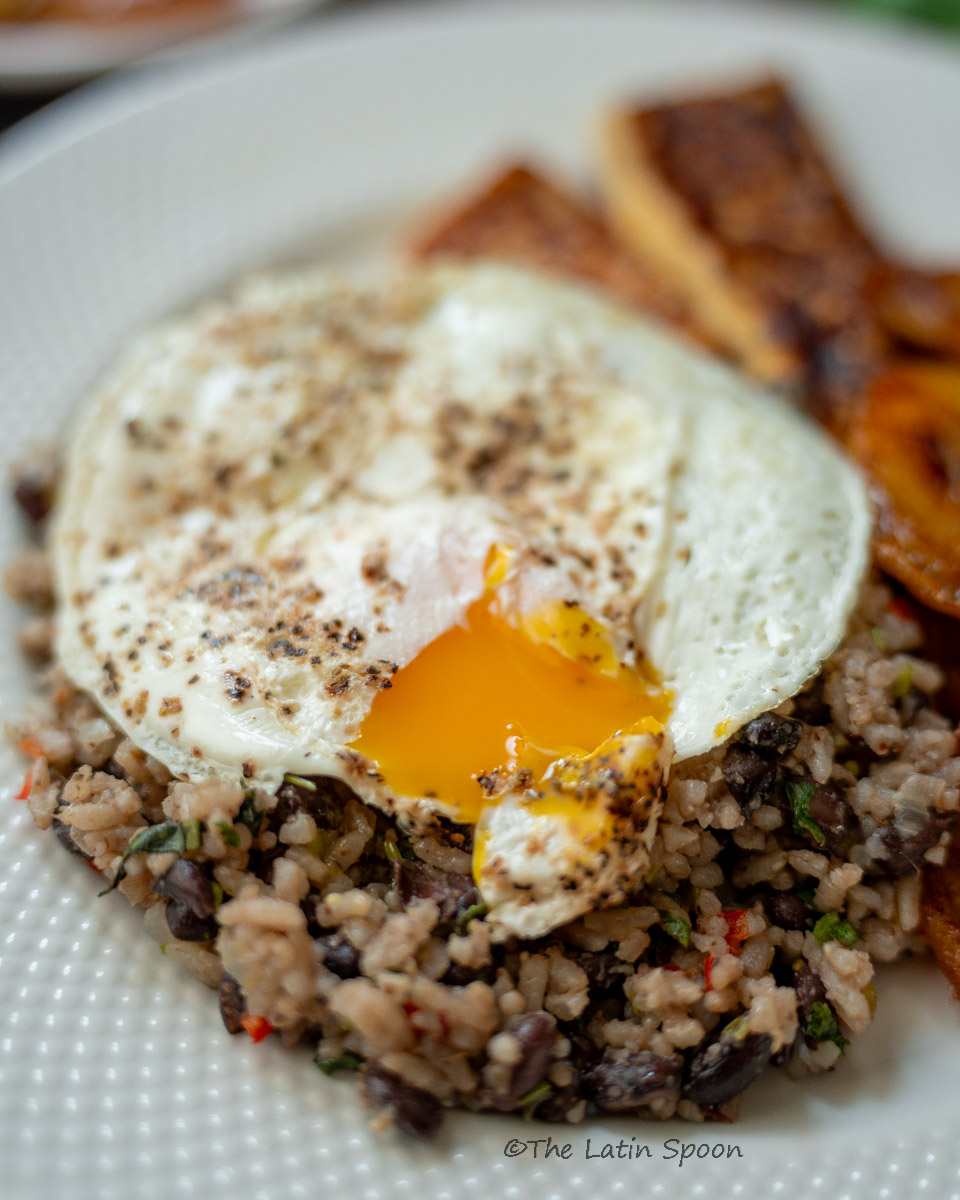
💡 Extra Tips for the Perfect Gallo Pinto
- Day-old rice and beans are your best friends. Pinto was created to reuse leftovers, so make your rice and beans the day before (or even two days before). Just keep them in an airtight container in the fridge.
- No leftovers? No problem. If you’re working with fresh rice and beans, make sure they cool completely before mixing them in, otherwise the texture will turn out mushy.
- Using canned beans? Be sure to drain them first. If you add the bean broth or liquid straight from the can, your Pinto will turn out too mushy.
- Make the sofrito ahead. Prepping onions, peppers, celery, and garlic in advance can cut down cooking time when you’re ready to make your Pinto.
- No Salsa Lizano? Don’t panic—just add a little extra oregano, black pepper, and cumin. It won’t be exactly the same, but it will still taste delicious.
- Spice it up. Want some heat? Add a touch of cayenne, chipotle, or any hot pepper you like. Remember: this is your Pinto—make it the way you love it.
Step-by-step photos
Here you’ll find step-by-step photos with short captions so you can nail a delicious Gallo Pinto every time.
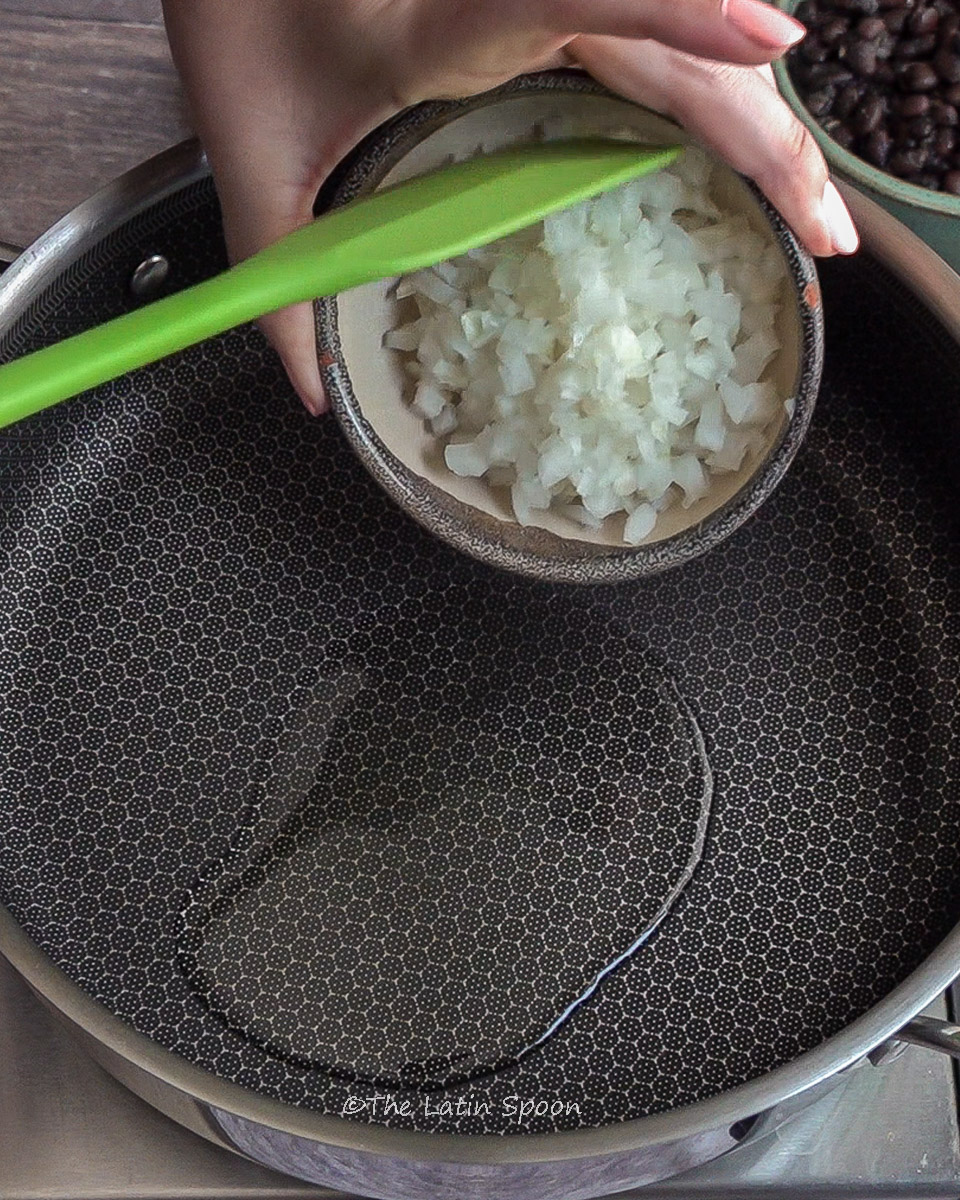
Step 1: Start the sofrito.
In a large pan or skillet over medium heat, add the oil and onions.
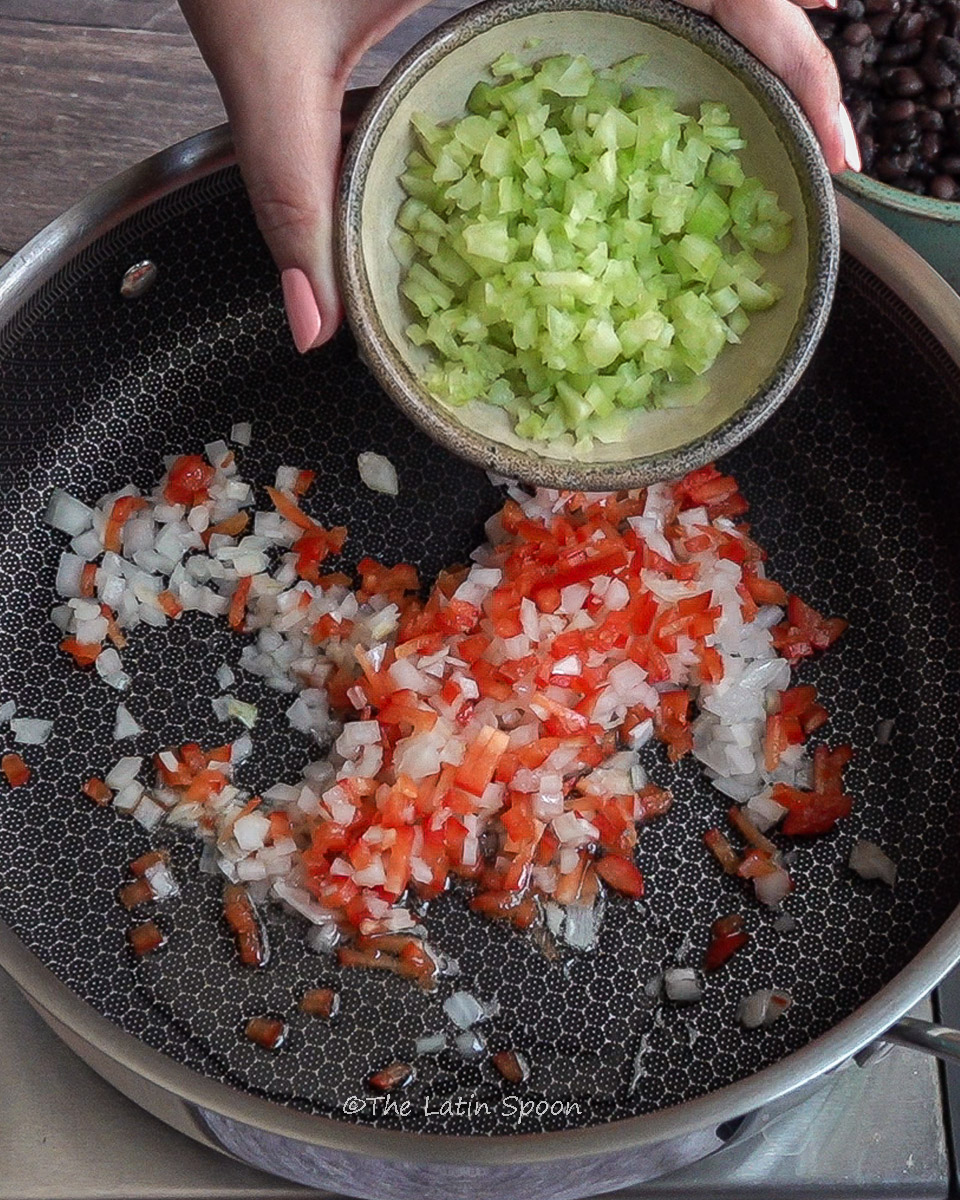
Step 2: Add more veggies.
Add the red bell peppers and celery. Stir and cook 3–5 minutes until softened..
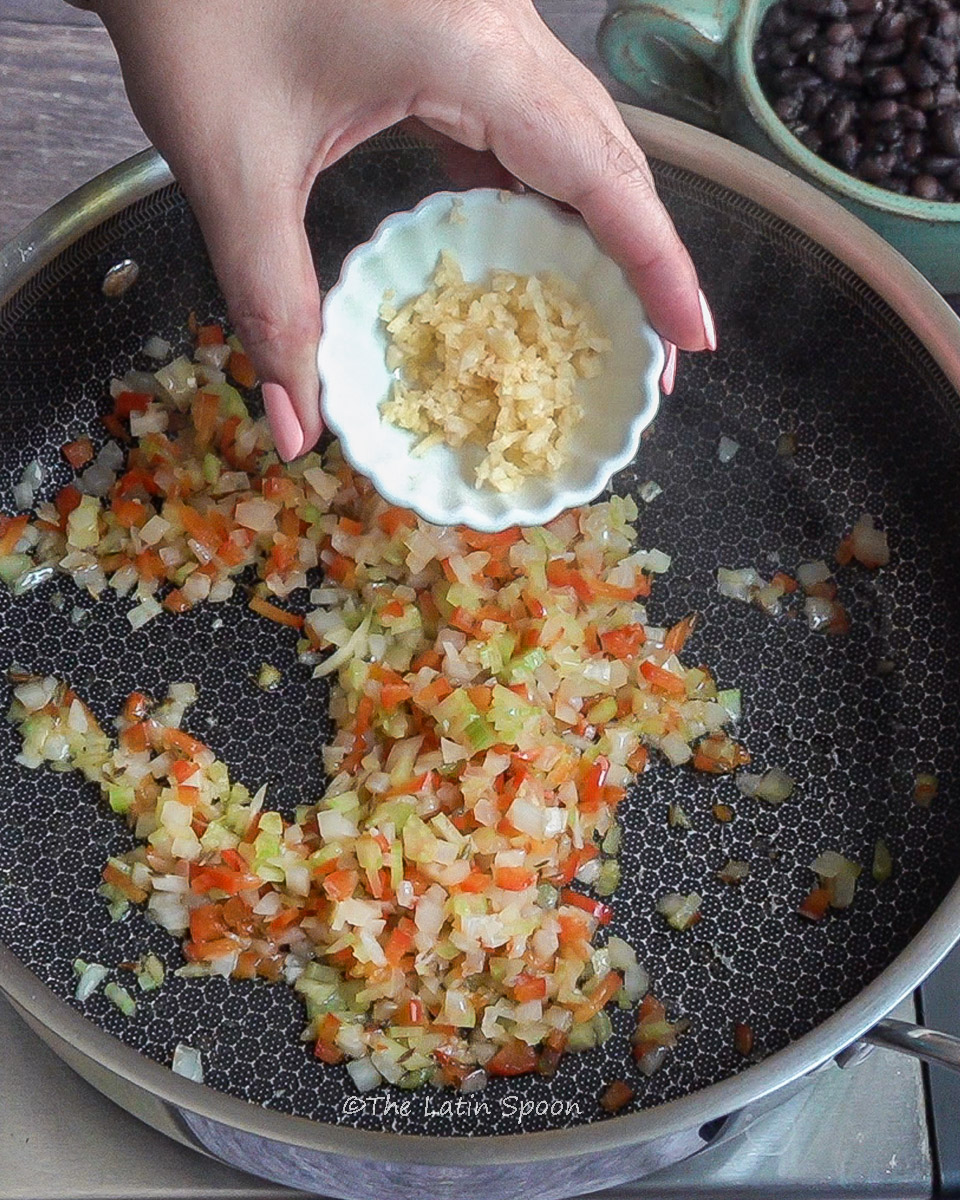
Step 3: Garlic and spices.
Add finely chopped garlic and cumin seeds. Stir constantly 30–60 seconds until fragrant—don’t let the garlic burn.
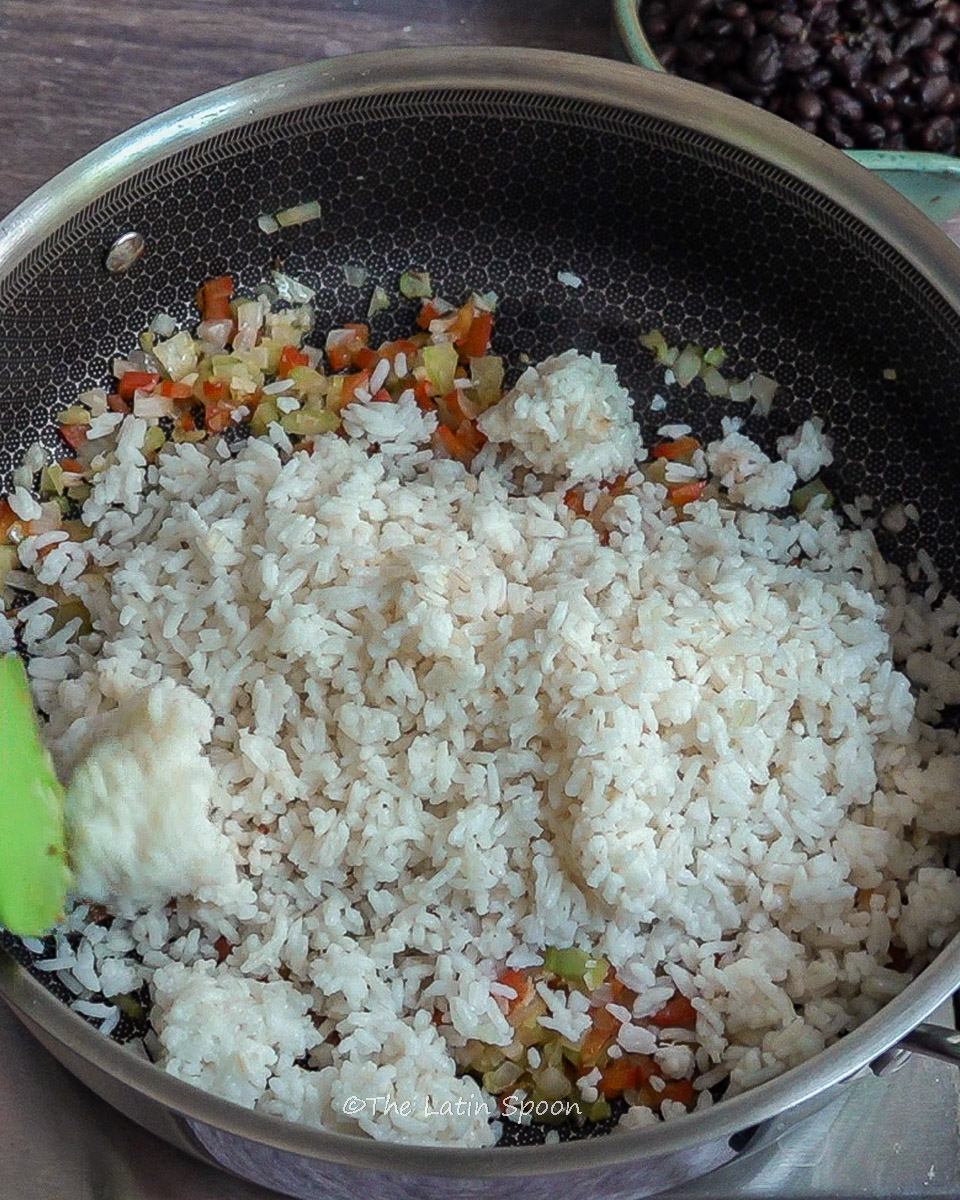
Step 4: Add the rice.
Add your day-old rice (arroz añejo). Break up any clumps with a spatula and toss with the sofrito. Cook 2–3 minutes.
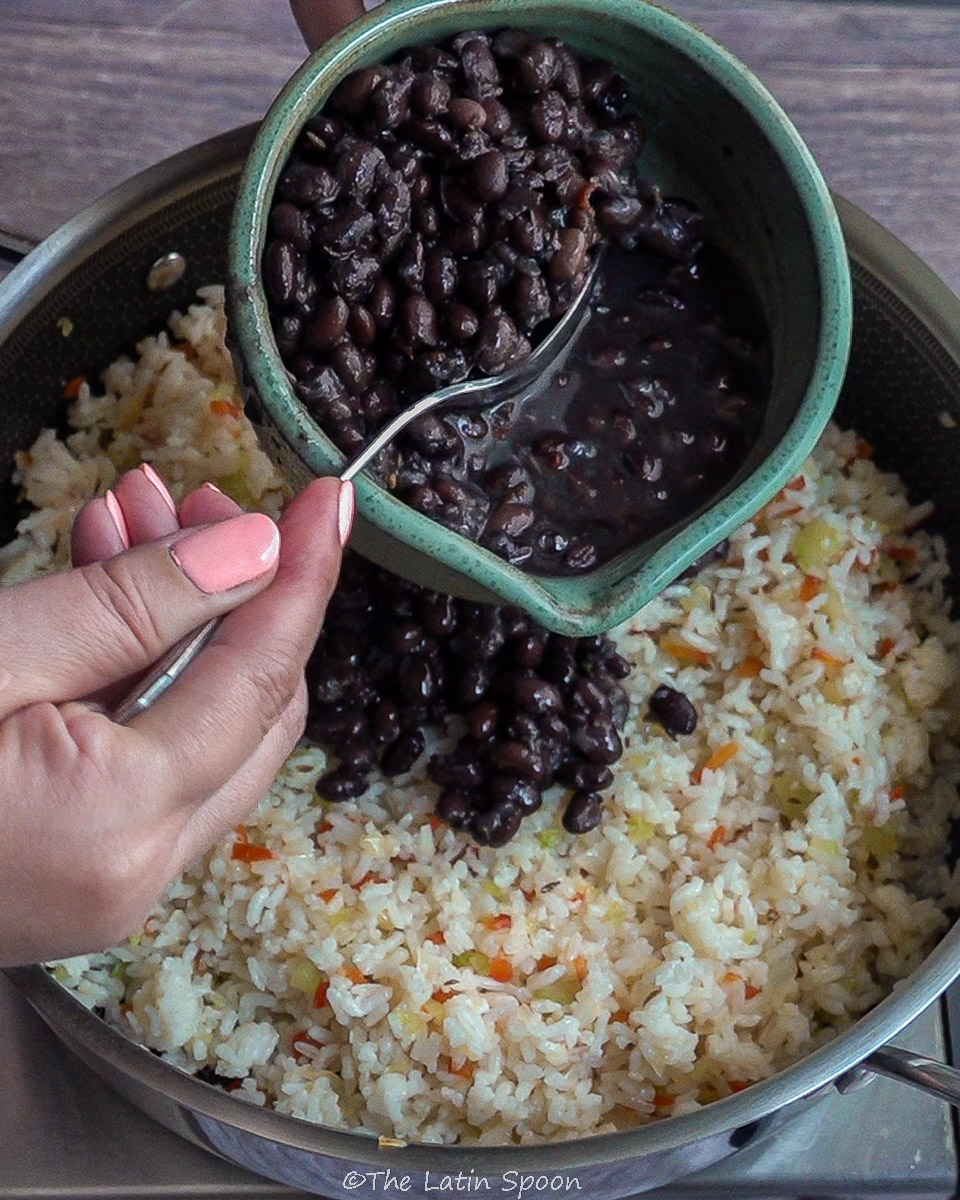
Step 5: Add the beans.
Add the beans (drain if using canned; avoid the broth or liquid). Fold in and adjust the rice-to-beans ratio if needed.
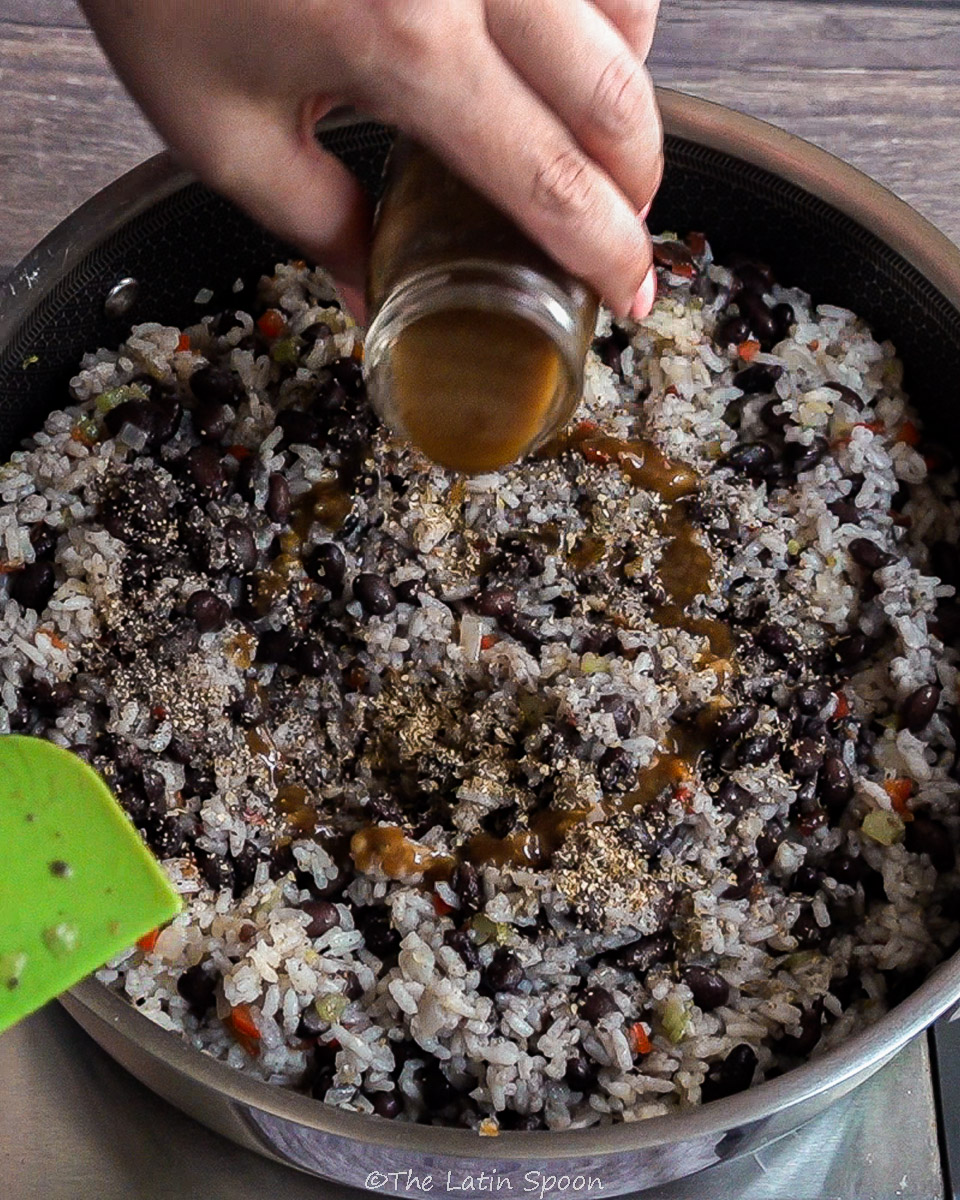
Step 6: Season it.
Add Salsa Lizano (optional), black pepper, dried oregano, and salt to taste. Mix well.
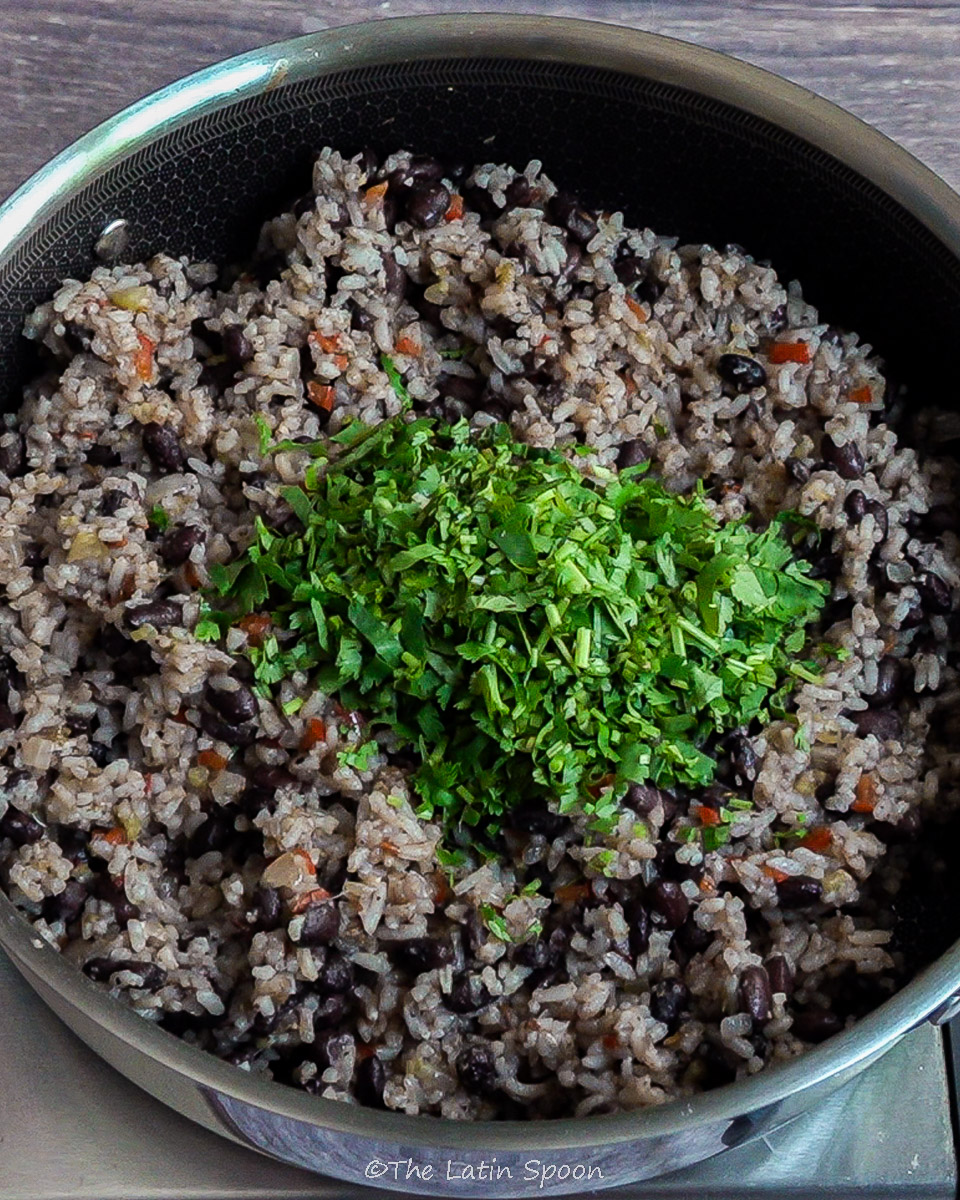
Step 5: Let flavors develop.
Cook 5–7 minutes so the flavors come together. Turn off the heat, then stir in cilantro and culantro.
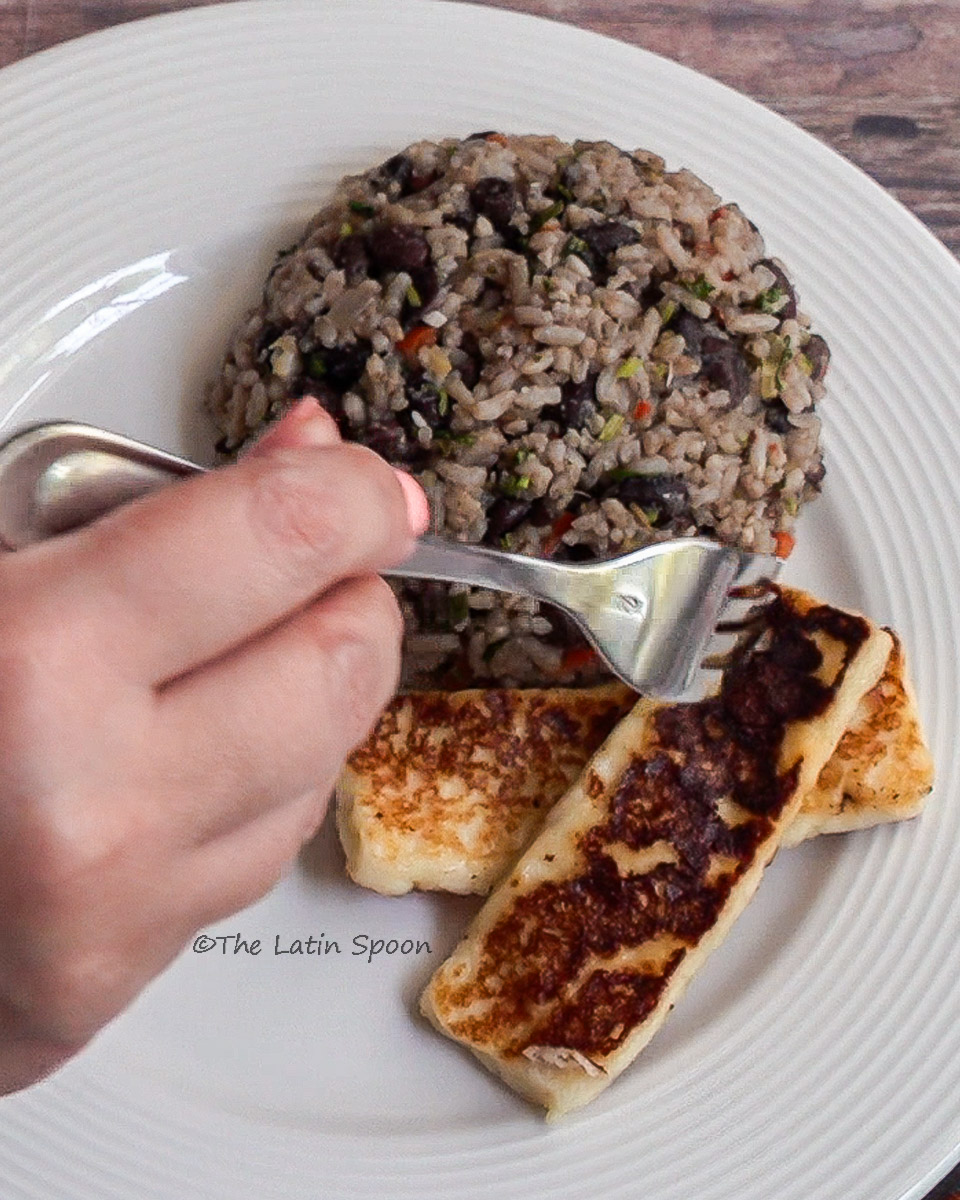
Step 6: Plate and serve.
Serve with fried plantains, fried cheese, and scrambled (or fried) eggs. (Optional: mold the Pinto using a small bowl for a neat dome.)
💡 Your Gallo Pinto Questions, Answered
Yes, you can. Canned beans are delicious too, but they’re usually cooked very plain, so you might have to adjust your seasonings a little bit. If you want to learn how to make beans the Costa Rican way, you can check it out here.
First of all, don’t panic. It’s totally fine if you don’t add Salsa Lizano to your Pinto. Sometimes I have Lizano in my fridge and still feel like not adding any, and it’s perfectly ok. What I usually do in those cases is double down on the seasoning—more sofrito, more oregano, more cumin. You could even add a little tomato to your sofrito. Trust me, your Pinto will still be delicious.
Up to 7 days in the fridge if stored properly. But it also freezes really well. Sometimes I make a big batch, freeze part of it right away, and it thaws out beautifully when I need a quick meal.
People think Costa Ricans eat Gallo Pinto only for breakfast—but that’s not true! It’s definitely most popular in the morning with fried plantains, cheese, scrambled eggs, natilla (Costa Rican sour cream), plus coffee and some fresh fruit on the side. But we also eat Pinto at lunch or dinner. Try it with pollo a la plancha (grilled chicken) and salad, or with carne en salsa (beef stew) and cabbage salad. Honestly, you can eat it with anything you like. If you’re enjoying it for breakfast, pair your Gallo Pinto with a refreshing Tropical Fruit Salad and keep it vegan-friendly.
Yes, absolutely. Just make sure you’re using oil or vegan butter. Salsa Lizano is also a vegan-friendly sauce, so you can add that too. For sides, go with fried plantains (a must!) and maybe add some steamed cauliflower and carrots. Yum yum!
Why You’ll Love Gallo Pinto
Because it’s more than just rice and beans—it’s comfort food with history. Every bite carries the flavors of Costa Rica.
It’s simple yet full of flavor, it makes the most out of leftovers, and it’s a dish that adapts to you—black beans, red beans, crispy or soft, with or without Lizano.
It’s also incredibly versatile. Gallo Pinto is naturally vegan, and if we want to get a little scientific, rice + beans together make a complete protein. It’s budget-friendly, lasts a long time in the fridge, and freezes beautifully—perfect for meal prep or feeding a crowd.
And above all, it’s a reminder that food connects us.
📌 Related Recipes:
- Learn how to make white rice the Costa Rican way
- Learn how to make black beans the Costa Rican way
- Enjoy this pinto with Yucca Flower Picadillo
- Coming next week→ Learn how to make Sofrito the Costa Rican way!
💬 Let’s connect!
Let me know in the comments which Costa Rican recipe you’d like me to upload to the blog next. And if you make this Gallo Pinto, send me your pictures or tag me on social media—I love seeing your creations. ¡Pura vida! 🌿
Besitos (kisses),
Mara
Costa Rican Gallo Pinto
Equipment
- Cutting board and knife
- Large pan (or skillet)
Ingredients
- 2 tablespoons oil
- ¼ cup red bell pepper chopped
- ¼ cup onion chopped
- ¼ cup celery chopped
- 2 garlic cloves finely chopped
- ½ teaspoon ground cumin
- 5 cups cooked white rice
- 2 cups fully cooked black beans
- ½ teaspoon dried oregano
- ½ teaspoon black pepper
- 2 tablespoons Salsa Lizano
- Fresh cilantro and culantro to taste
- Salt to taste
Instructions
- In a large pan over medium heat, add the oil, onions, peppers, and celery. Cook for 3–5 minutes, or until the vegetables look translucent and fully cooked. Add the cumin and finely chopped garlic, and cook for another 2–3 minutes—just be careful not to burn the garlic. This mixture is called sofrito, and it’s the base for many Costa Rican dishes.🌱
- Next, add the rice. Since we’re using rice from previous days, it might clump together or form little hard balls. Just break them apart with a spatula and stir constantly into the sofrito. Cook the rice for about 3–5 minutes, or until it starts turning slightly reddish from the bell peppers.🧅
- Add the beans—these can be black, red, or even pinto beans. Make sure you only add the beans and not their broth; otherwise, your Gallo Pinto will turn mushy (unless that’s the texture you’re aiming for). Once the beans are in, stir everything together and check your rice-to-bean ratio. If you feel it needs more rice or beans, adjust it now.🧄
- Start adding the remaining ingredients: black pepper, Salsa Lizano (optional but highly recommended), oregano, and salt. Stir well to combine and let everything cook together for about 5 minutes so the flavors can really develop and make your Gallo Pinto taste amazing.🍚
- Turn off the heat and add the final touch: the fresh herbs. In Costa Rica, we call them both culantro. One is the cilantro you usually find in stores, and the other is culantro ancho, which you can often find in Mexican or Asian markets. Stir them in one last time before plating.🌶️
- To plate your Gallo Pinto the traditional way, grab a small bowl and fill it to the top with the rice and beans. Place the plate you’ll be serving on top of the bowl, flip both upside down, then lift the bowl to release the rice. You’ll have a neat little dome of Gallo Pinto, perfect to pair with fried plantains, fried cheese, scrambled eggs, or anything else you’d like.🌿
Video
Notes
- Make the rice and beans a day or two before making Gallo Pinto. Keep them in an airtight container in the refrigerator until you’re ready to use them.
- Gallo Pinto was created as a way to use up leftover rice and beans. If you don’t have day-old rice and beans, make sure to let them cool off completely before mixing them together. Otherwise, the texture will be different.
- You can prepare the sofrito ahead of time to reduce cooking time.
- If you don’t have Salsa Lizano, just add a bit more of the other spices like oregano, black pepper, and cumin.
- Feel free to add a touch of chile picante (hot peppers like cayenne, chipotle, or any other type). This is your Pinto—make it the way you like it!


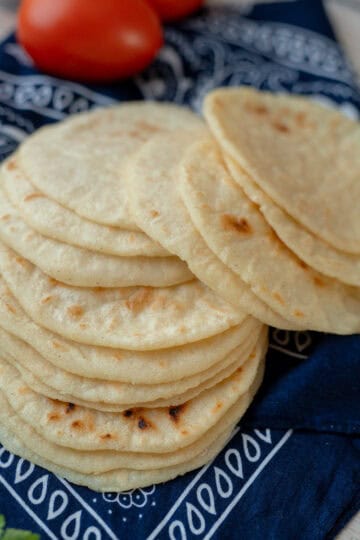


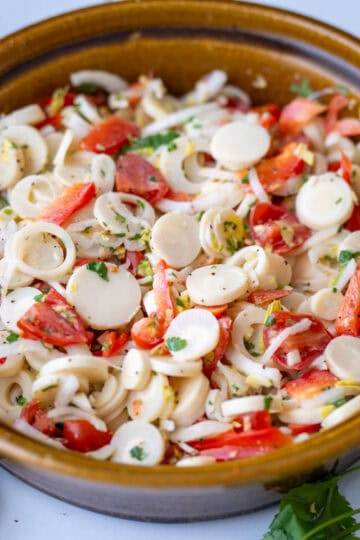
Leave a Reply